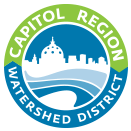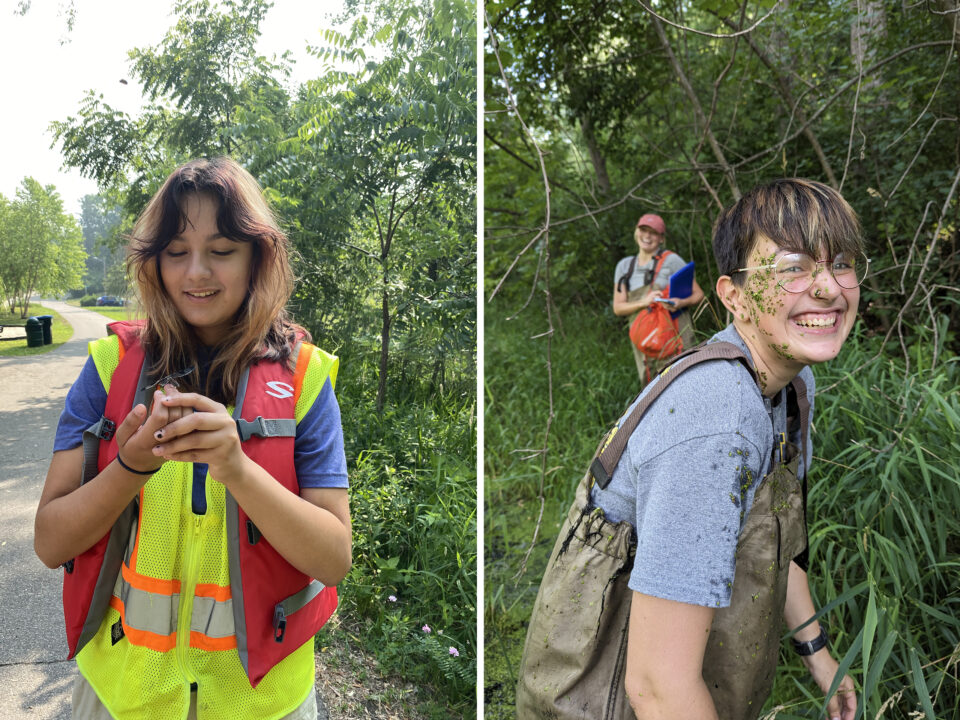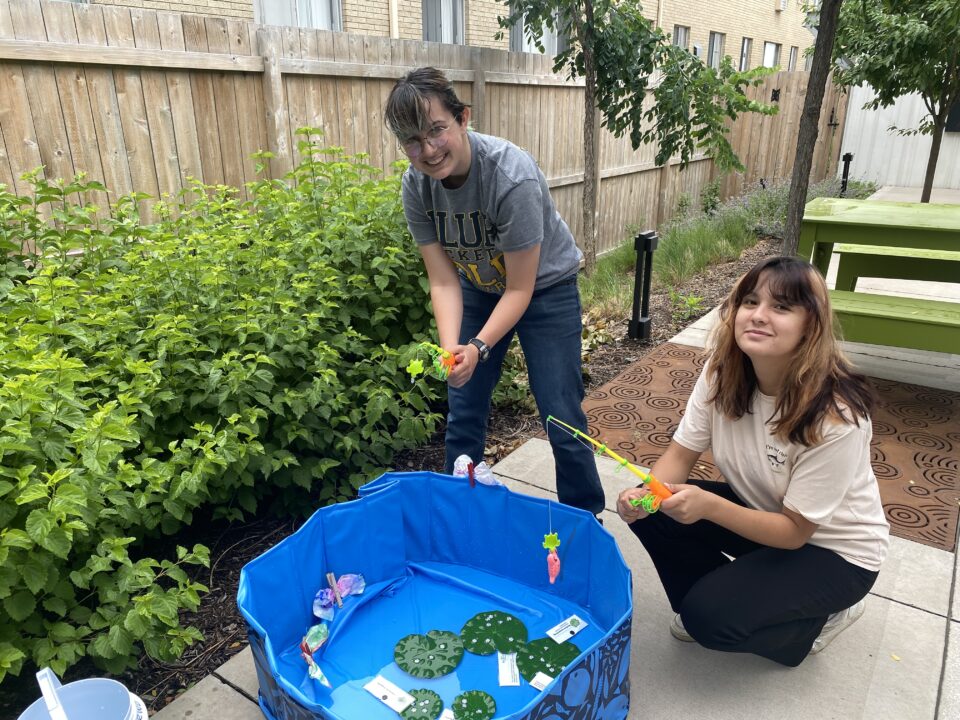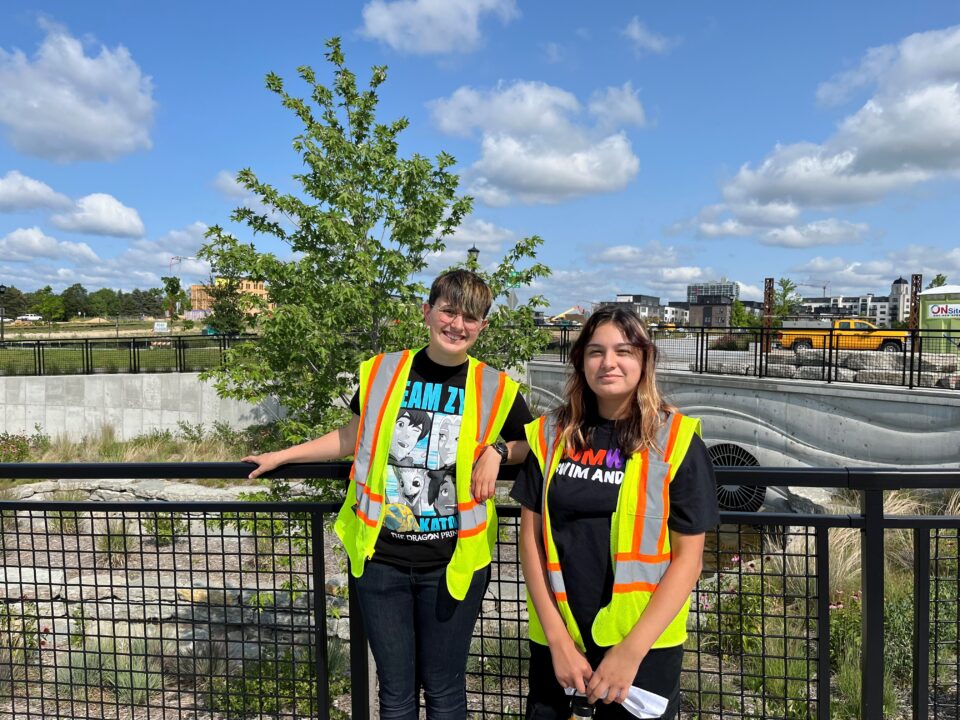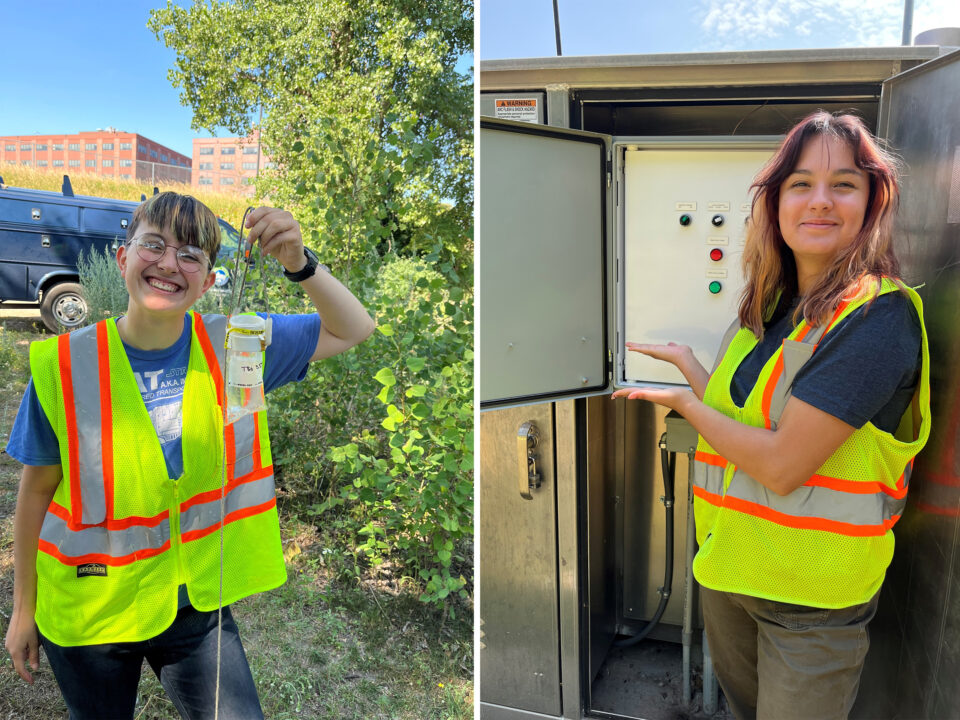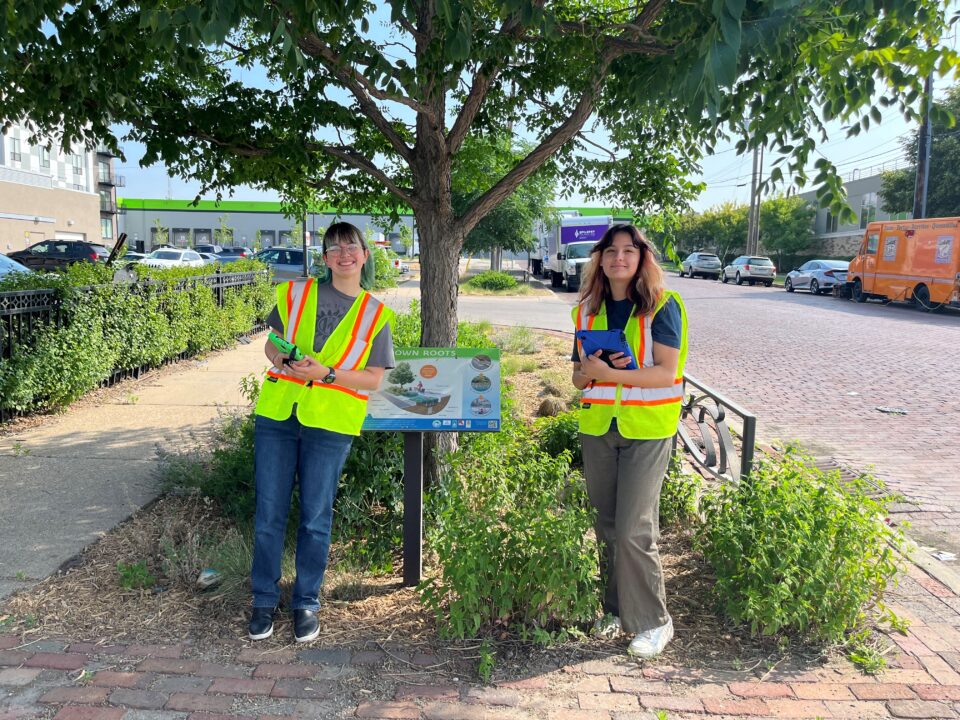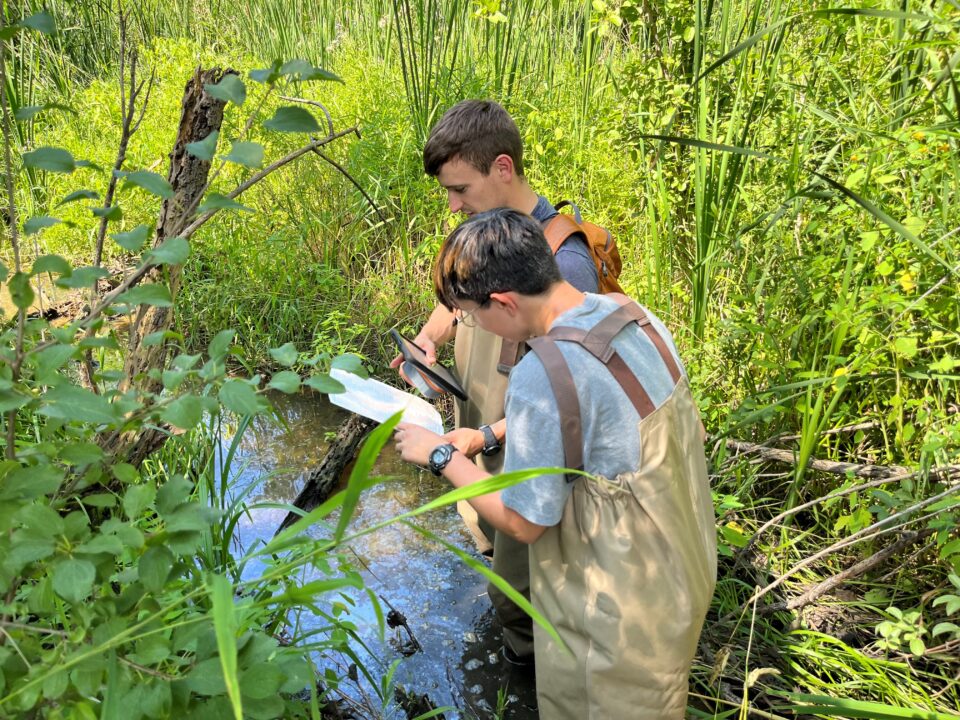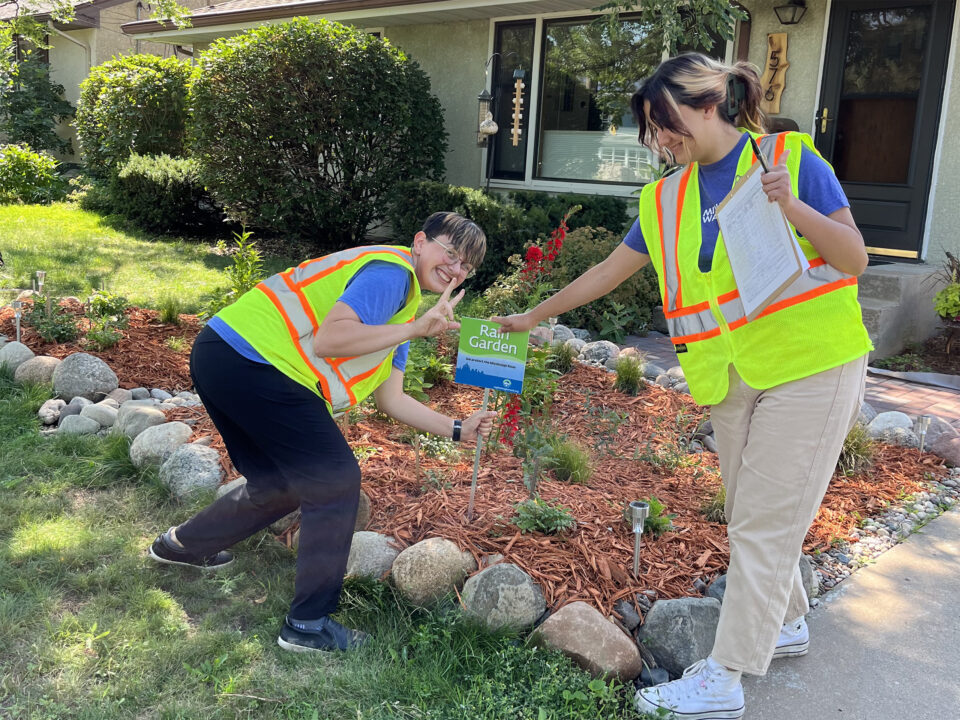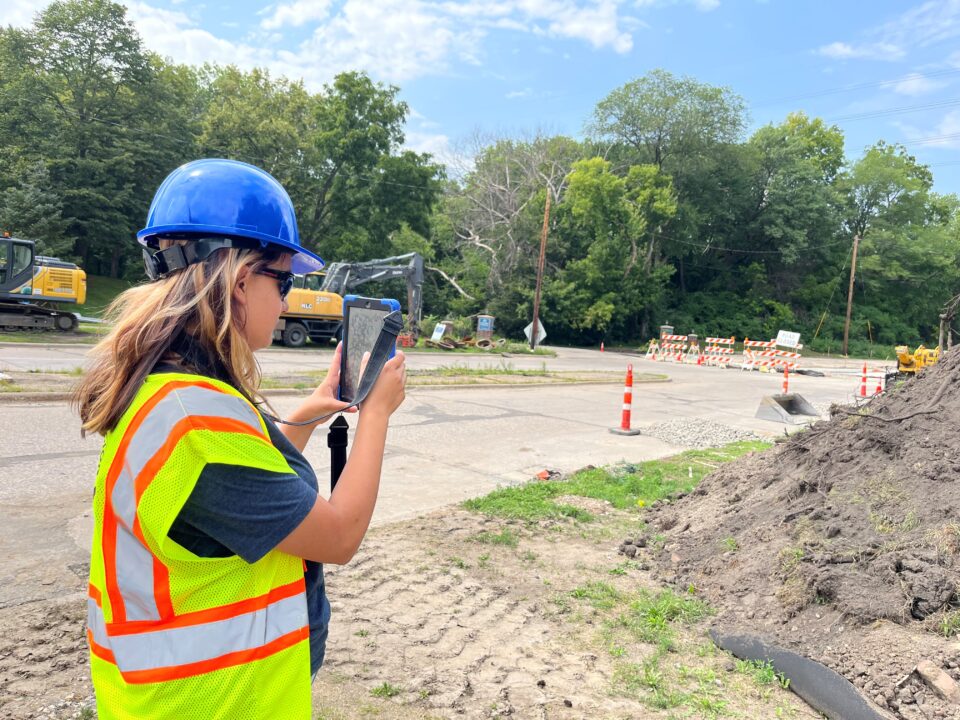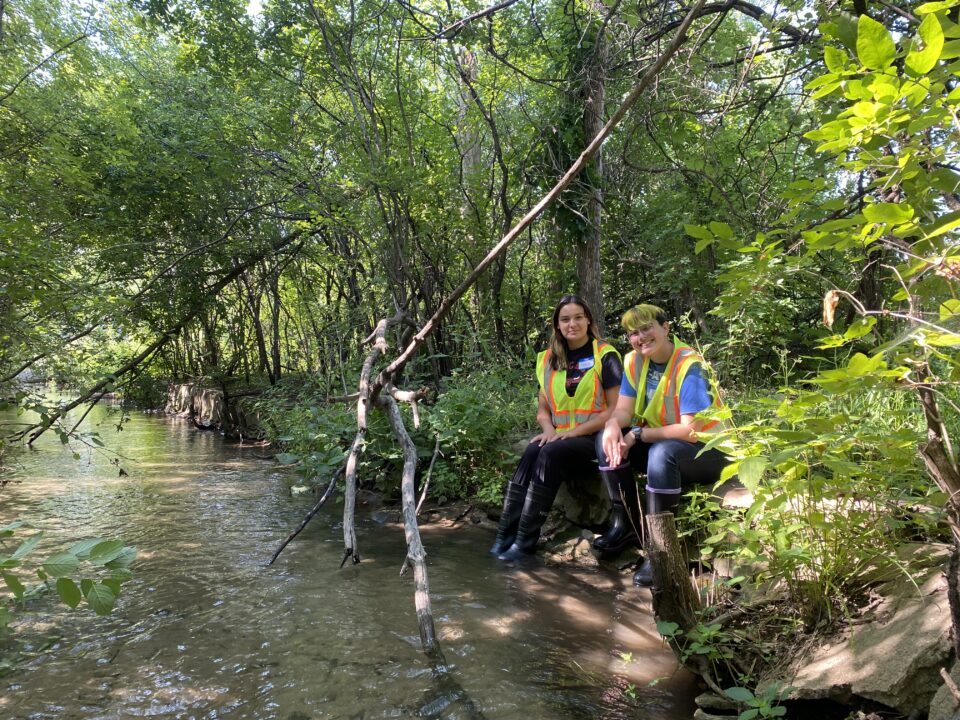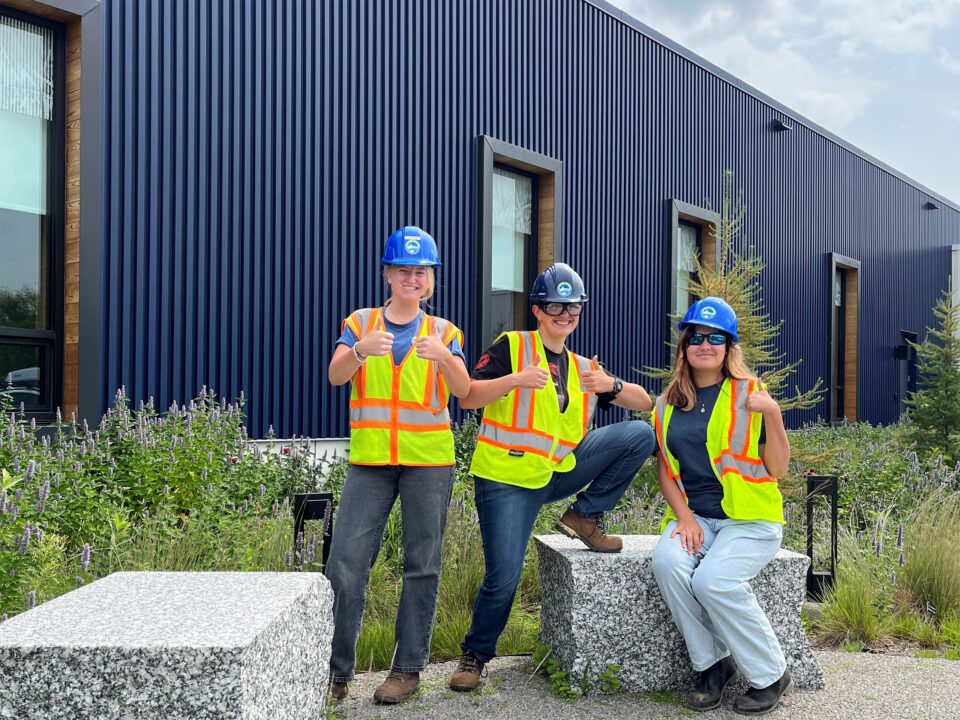2023 Right Track WaterCorps Internship
In June 2023, we launched our inaugural WaterCorps Internship. Our goal with the program is to provide practical experience to young people interested in water resources careers. We hired for the WaterCorps internship through the City of Saint Paul’s Right Track program. The program offers summer internships with beneficial exposure and professional development opportunities to young people in Saint Paul who live in a cost-burdened household or have a barrier to employment.
We welcomed two incredible young people as our 2023 WaterCorps Interns, Edric and Isabella. During their time with Capitol Region Watershed District (CRWD), they shadowed all five of our divisions. As part of their work with the Communications and Engagement division, we asked them to write a blog about their experience with CRWD.
Introduction
I’m Edric (Ed), and I’m a junior in high school. I am involved with a small number of after-school activities because I put a lot of hours into them each week. I am involved with my school’s theatre department and Future Farmers of America. I am also a part of my school’s Chinese (Mandarin) Immersion track, which I plan to minor in at college. I am also very invested in sustainable agriculture, such as buffer zones around crop fields and irrigation systems. I also have adopted a storm drain.
My name is Isabella (Bella), and I am a senior in high school. I participate in numerous activities at my school, such as the Swim and Dive Team, Softball, Youth Equity Team, Theater, and other student leadership groups. Outside of school, I am very passionate about the environment and have been in programs at Minnesota Valley National Wildlife Refuge, Friends of the Mississippi River’s Environmental Stewardship Institute Council, and the Metropolitan Council to further my knowledge on environmental issues. I want to pursue a career in ecology, restoration, or a related field!
Administration Division
Our first week at CRWD was with the Administration (Admin) division. We spent time learning about the office, practices, and the administration team. We were even welcomed to CRWD with a totally not coincidental potluck and lots of ice cream.
Part of adjusting to the environment with CRWD was learning a little bit about each division before we spent our two weeks with them. We visited various sites to learn about stormwater practices. In doing so, we got to help the monitoring and research team with best management practices (BMP) surveys.
With the Admin division, we learned about the Diversity, Equity, and Inclusion (DEI) Plan, including what areas CRWD prioritizes and actions they are taking within that plan. We decided we wanted to focus on the Community Advisory Committee and update an informational flyer, so it is accessible to people of all backgrounds. Having a diverse committee to speak for all residents in our watershed is important to us and CRWD. Lastly, we talked about the hiring and onboarding process, what practices CRWD is doing to be an equitable employer, and how to get a new staff member settled into the office with the help of Julia. Our first week with CRWD was great overall, and we were excited to be in such a welcoming space.
Communication and Engagement Division
We spent our second and third weeks with the Communications and Engagement Division. We reviewed the materials CRWD uses to interact with the public and the information they share. We prepared for and participated in fun community events like the Little Africa Festival, Rivoli Bluff Bash, and Dragonfly Bonanza. We learned how to interact with the public at events and how to talk about CRWD’s work with someone who may be new to it. We covered all CRWD’s programs and how every resident can get involved. We even wrote a practice Partner Grant proposal.
We helped prepare macroinvertebrate samples to use at the annual Dragonfly Bonanza in late June at Trout Brook Nature Sanctuary. We went to Villa Park to take some bottle trap samples in the wetlands, and after getting stuck in the mud multiple times, we safely exited. The event itself was interesting; we led the public through our dragonfly larva game, talked about the CRWD map and the area we cover, and got to catch up with some of our partner organization friends. We were even able to catch a few dragonflies!
Early one morning, we joined Urban Roots at a Mississippi Water Walk with Maricella, CRWD’s Events Coordinator. Thia from Urban Roots shared the Dakota creation story with us, and we spent time in groups speaking about our connections with water, how we view it due to capitalism and Western ideals, and the challenges of bottled water companies affecting how we view and need water. We then spent time walking down to the Mississippi, reflecting on where we consider it to come from, how we connect with it, and what the path of the water will affect, and who it will meet. We then met back up in groups to talk about it. It was so interesting to hear everyone’s interpretation of how water moves because many of us had different views and individual relationships with water. We ended with a trash cleanup and headed back to the office.
Monitoring and Research Division
We met with Bob, the division manager, to get an overview of Monitoring and Research at CRWD. We learned about the types of project sites and what CRWD does with data collected from sites. Afterward, we had a safety talk with Elizabeth, who demonstrated how the confined space entry process looks and explained how to stay safe at each of the sites we would visit.
We went to several sites around the District with the monitoring team. At different places like Crosby Lake, Victoria Park, Willow Reserve, and Trout Brook Nature Sanctuary, we helped download data from flow and level loggers, take staff gauge readings, complete surveys, and collect water for E. Coli and base composite samples.
Como Lake has three buoys with continuous data monitors attached to them. We paddled the canoe to the buoys to download the data and take Secchi depth measurements and dissolved oxygen readings at various depths. Como Lake is only around 15 feet at its deepest point, so we tried to get a depth reading that was as close to that as possible. We also used GoPro cameras at Como to take underwater footage of transplanted native plant enclosures that are thriving! Monitoring staff will use the footage for surveying and identifying which plants were growing well in that environment.
We toured Highland Bridge, where CRWD helped create a massive water feature on 122 acres of redeveloped land along the Mississippi River. Ford Motor Company originally developed the site in the 1920s for an assembly plant before closing in 2011. The water feature spans from the north side of the development along Ford Parkway and flows through to Hidden Falls. It was interesting to hear what CRWD and project partners prioritized when planning and designing the site, including allowing residents access to the water at various points. It is also accessibility friendly and has many features, including a hammock forest, swinging benches, and stepping stones down to the reimagined stream channel. We walked along the limestone bottom of the stream channel, where we could see fossils in the rock. We ended with a tour of Hidden Falls Regional Park, which is connected to the Highland Bridge site by a tunnel underneath Mississippi River Boulevard.
Planning, Projects, and Grants Division
We started our first week with the Planning, Projects, and Grants Division by getting an overview of the grants CRWD offers. Throughout the week, we followed up on the different types of sites inspecting how well the plants and overall projects were doing. We met with a few grant applicants to take measurements and consider what clean water projects they can implement on their site.
During our time with the Planning, Projects, and Grants Division, their staff helped the Monitoring team with their wetland vegetation surveys. We went to Willow Reserve, an amazing site of 23 acres of wetland, meadow, and forest tucked away in the middle of the city. We bushwacked our way through and found ourselves surrounded by nature. Willow Reserve is unique, with many kinds of plant species. The forest had a lot of other species compared to the meadow and wetland. We also went to Swede Hollow, another hidden nature spot near downtown Saint Paul. It was a sweaty day. We got stuck in the muck twice, and Ed ended up covered in duckweed, but it was worth it. We wrapped up our week by writing a spotlight on native and invasive plants with our newfound knowledge. Check out the spotlights in CRWD’s Fall Maintenance Tips Newsletter.
Regulatory Division
We began our week meeting with Forrest, the Regulatory Division Manager, and Elizabeth, the Permit Program Manager, to learn more about the Regulatory Division. We learned that all construction sites over an acre must apply for a permit through CRWD. It’s interesting driving to places knowing that all construction sites you may see within the district have a permit and go through inspections with CRWD.
We spent time reviewing project site plans, understanding the blueprints of these construction projects, and the involvement of stormwater management. We got to visit a few of the sites and help conduct inspections to learn what practices contractors must install to protect the water and river health. We met with site contractors and learned that communicating is a large part of the regulatory division’s daily work.
We did an investigation of a stream channel north of Trout Brook Nature Sanctuary. We walked up the stream in our knee boots to where we knew there were sand deposits. We worked to figure out the source of the sand deposits, which changed throughout the stream channel. We ultimately discovered there were multiple sources of the sand in the stream, along with a few erosion and stormwater pipe issues. We felt accomplished with our investigation! Regulatory Division staff will now work to build the necessary partnerships to repair those issues.
Conclusion
From Bella: I am so grateful that I got the opportunity to work at CRWD. It is such a unique and welcoming space to be in. The biggest things I gained were more knowledge about the many careers one can have in water and water management and how different that can look in each person’s position. You can find something for everyone in the environmental field! I also enjoyed constantly learning and doing new things that were so engaging and different with each division. Lastly, I strengthened many important skills, such as adaptability and communication.
From Ed: CRWD is a wonderful place! I would say the main thing I took away from the experience is how people can communicate to get what they need without causing more conflict.
Future Right Track interns should join the WaterCorps position at CRWD because it is a great environment, and you will gain skills you wouldn’t get anywhere else.
